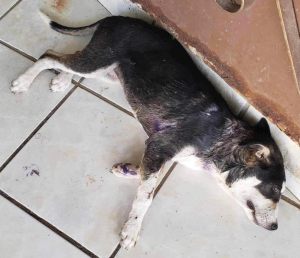Degenerative Myelopathy in Dogs: A Comprehensive Guide
Degenerative myelopathy (DM) is a progressive neurological disease affecting dogs’ spinal cord. It is characterized by the gradual deterioration of the myelin sheath, which is the protective covering of the nerve fibers in the spinal cord. This damage to the myelin sheath disrupts the transmission of nerve signals, leading to muscle weakness, incoordination, and eventually paralysis.
DM is a progressive disease, meaning that it gets worse over time. There is no cure for DM, but there are treatments that can help slow the progression of the disease and improve the dog’s quality of life.
What causes DM?
The exact cause of DM is unknown, but it is believed to be a genetic disease. Certain breeds of dogs are more predisposed to developing DM, including:
- German Shepherds
- Boxers
- Welsh Corgis
- Rhodesian Ridgebacks
- Bernese Mountain Dogs
- Rottweilers
- Old English Sheepdogs
- Irish Setters
- Golden Retrievers
- Labrador Retrievers
- Doberman Pinschers
- Great Danes
What are the signs and symptoms of DM?
The signs and symptoms of DM typically develop in dogs over 6. The first signs are often subtle and may be mistaken for other conditions, such as arthritis or hip dysplasia. However, as the disease progresses, the symptoms become more apparent and may include:
- Muscle weakness and incoordination in the hind limbs
- Dragging of the paws
- Knuckling over the toes
- Crossing of the hind legs
- Difficulty getting up and down
- Stumbling and falling
- Loss of bladder and bowel control
How is DM diagnosed?
There is no single test that can definitively diagnose DM. However, your veterinarian will likely perform a physical and neurological examination to rule out other possible causes of the dog’s symptoms. They may also recommend tests like X-rays, blood tests, and cerebrospinal fluid (CSF) analysis.
How is DM treated?
There is no cure for DM, but there are treatments that can help slow the progression of the disease and improve the dog’s quality of life. Treatment options may include:
- Physical therapy: Physical therapy can help to strengthen the muscles and improve the dog’s range of motion.
- Acupuncture: Acupuncture is a traditional Chinese medicine practice that involves inserting thin needles into specific points on the body. Acupuncture is effective in reducing pain and inflammation in dogs with DM.
- Medications: Several medications can be used to treat the symptoms of DM, such as pain relievers, muscle relaxants, and anti-inflammatory drugs.
What is the prognosis for dogs with DM?
The prognosis for dogs with DM is variable, but most dogs eventually become paralyzed and unable to walk. The average lifespan of a dog with DM is 18-24 months after the onset of symptoms.
How to care for a dog with DM
If your dog has DM, there are several things you can do to help them live a comfortable and happy life:
- Please provide them with a soft, comfortable bed to lie on.
- Make sure they have easy access to food and water.
- Please help them to get up and down stairs and to go for walks.
- Assist them with bathroom breaks if they can no longer control their bladder or bowels.
- Monitor their condition closely and take them to the vet for regular checkups.
Conclusion
DM is a devastating disease, but some things can be done to slow its progression and improve the dog’s quality of life. If you think your dog may have DM, it is essential to take them to the vet for diagnosis and treatment immediately.
Additional tips for caring for a dog with DM
- Use non-slip mats or rugs on the floor to help prevent your dog from slipping and falling.
- Please keep your dog’s nails trimmed short to help prevent them from scratching themselves.
- Regularly check your dog’s skin for pressure sores and other injuries.
- If your dog can no longer walk, you may want to consider getting them a wheelchair or other mobility aid.
- Spend plenty of time with your dog and give them lots of love and affection.
Euthanasia
If your dog’s condition worsens and they can no longer enjoy a comfortable and happy life, you may consider euthanasia. This is a difficult decision, but it is sometimes the most compassionate thing to do for your pet.



